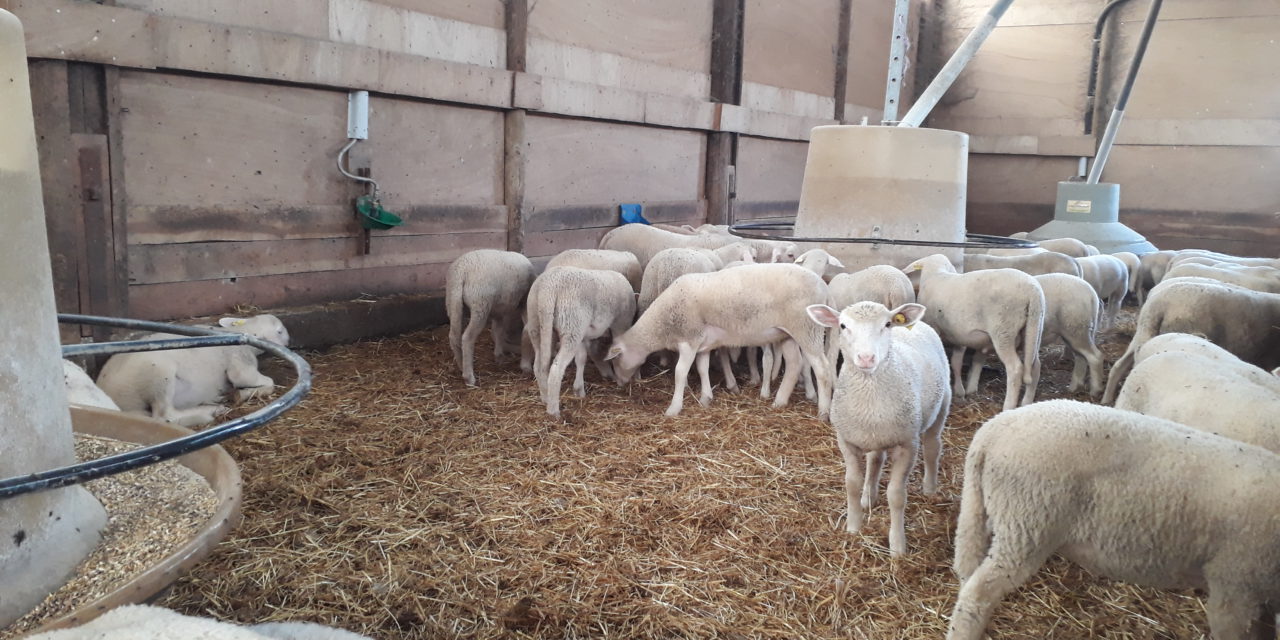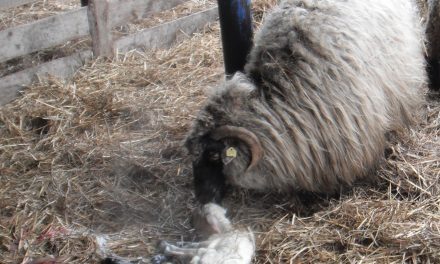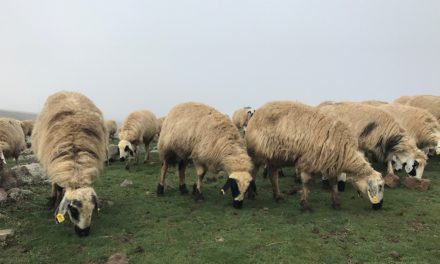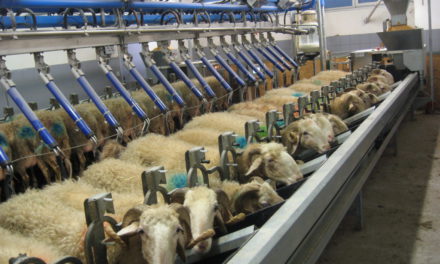This post is also available in:
![]()
![]()
![]()
Coccidiosis
Factsheet name: Coccidiosis
Need / Issue: To assure lambing conditions indoors and to improve lamb survival
What is coccidiosis?
Coccidiosis is caused by species-specific protozoal parasites that infect the gut wall, multiply and cause damage, often presenting clinically as diarrhoea. Many species of coccidiosis are harmless, but some are very pathogenic in young lambs. Coccidiosis is most common in 4-8 week old lambs, but older lambs can be affected if environmental challenge is high.
Eleven species are known to infect the small intestine of sheep, however, only Eimeria ovinoidalis and Eimeria crandallis usually lead to severe disease. Older lambs and occasionally ewes can shed coccidial oocysts into the environment through their faeces and infect younger lambs via the faecal oral transmission route. Shedding begins 9-28 days following infection. Once in the environment, these new oocysts become infective within 1-3 days when the optimal temperature (20-25°C) and humidity (above 70%) are met, meaning the level of environmental contamination can increase rapidly. Coccidial oocysts are very stable in the environment and can persist from months to years.
Animals with coccidiosis usually suffer from diarrhoea, and lose condition quickly, resulting in prolonged time to finishing. Poor carcass quality and weight can be an issue in lambs with extensive intestinal damage, due to the reduction in ability to absorb nutrients. Poor milk yield and increased risk of flystrike can be other knock-on issues. Some lambs may not show diarrhoea, but suffer from reduce weight gain (subclinical coccidiosis). Others may not show any disorder, but may still be highly infected and shed oocysts into their environment.
Risk Factors
- High intensity husbandry systems
- High stocking densities
- Poor management practices and insufficient colostrum intake
- Concurrent disease e.g. parasitic gastroenteritis, nutritional deficiencies and Border Disease
- Adverse physical conditions
- High faecal contamination environment
- Mixing of ages will put younger lambs at risk
Topic: health
Production: Dairy / Meat
Animal Category: Adult / Lamb / Replacement
Issue: Parasites
Diagnosis
Faecal examination for coccidial oocysts is useful. However, diarrhoea can precede patency and evaluating the species of coccidia present may require additional testing. Speciation of oocysts is the only way to definitively ascertain if the oocyst count is significant or not.
Differential diagnoses:
- Gutworms (e.g. Nematodirus)
- Salmonellosis
- Lush grass and high protein concentrate feed
- Rotavirus and cryptosporidium tend to affect a younger cohort of lambs and these enteric diseases rarely overlap with coccidiosis
- Border Disease Virus infection
Knowing the status of a batch of lambs from an early stage can be very useful to enable early treatment and therefore limit losses due to sub-clinical coccidiosis (drop in average daily gain) and clinical coccidiosis (weight loss or even mortality). Implementing a reasonable treatment can also save time, money, and limit drug inputs).
- Suckling lambs in batches where half the lambs are over 3 weeks old (do not wait until all the lambs are over this age).
- Fattening lambs: on grass or in a building, 3 weeks after the start of fattening process.
- Lambs over 3 weeks old with diarrhoea: for assessing the explanatory part of coccidiosis and to assess batch status.
An analysis is required for each physical batch:
- Select 10 lambs between 15 days and 3 weeks of age (do not take lambs under 15 days of age) per physical lot
- Prefer the weakest lambs or those with diarrhoea (dirty hindquarters)
- Collect 4 droppings per lamb (i.e. 40 droppings in total); for diarrhoeic lambs, collect the equivalent of one teaspoon of faeces.
- Put the droppings in a bag/pot
- Crush and mix the droppings as much as possible (the lab does not necessarily do this and it can bias the results)
- Mark the bag with the pen number / physical batch
- Send to the lab/vet (at room temperature, no need to refrigerate) requesting for quantification and identification of coccidiosis. Identifying the different species of coccidia is important, as not all of them are pathogenic.
- Interpretation of results: if results > 10,000 coccidia (all species) or > 5,000 pathogenic coccidia on the faecal mixture, treatment of the whole batch is recommended.
Caution: coccidia is very resistant to the environment: treatment of a highly contaminated batch will not prevent lambs from being re-contaminated with new clinical cases 3 weeks later.
Treatment
For use when environmental challenge is likely to be high and placing lambs in these areas cannot be avoided.
- Diclazuril or toltrazuril are both used to reduce coccidial shedding and reduce the severity of disease. Treating early is best to prevent chronic gut damage.
- Decoquinate is used in feed, recommended for a duration of at least 28 days (or the duration of the risk period), however this can prevent lambs generating immunity if they are exposed to only a very low number of coccidia. Lambs which do not ingest the creep feed, such as those which are sick, will not gain any protection.
- Lambs with severe diarrhoea require rehydration with electrolytes, protection from adverse weather and any risk of concurrent worm burden should be investigated.
Prevention
The main goal is to minimise exposure of young lambs to high levels of oocyst environmental contamination. Timed, targeted prevention products can also be useful.
- Reduce stocking density.
- Avoid a wide range of ages mixed together.
- Concurrent trace element deficiency can be a predisposing factor to coccidiosis susceptibility. Blood testing to rule out trace element deficiency can be beneficial.
- Elevating buckets and troughs above ground level to reduce faecal contamination.
- Clean and disinfect objects that lambs interact with, such as teats and troughs.
- Ensure adequate ventilation and drainage, and provide regular, plentiful bedding.
- Move creep feeders around to avoid oocyst build up in heavily used areas.
- Removal of organic matter and disinfection with a disinfectant which destroys oocysts.
- If possible avoid fields that carried young lambs in the previous season.
- Ensure lambs have sufficient energy and protein intake
- Stressful events such as adverse weather, transportation, castration and mixing with other groups will predispose lambs to developing coccidiosis if challenged. Try to avoid a number of these events coinciding.







